The Tuamotu Archipelago
French Polynesia
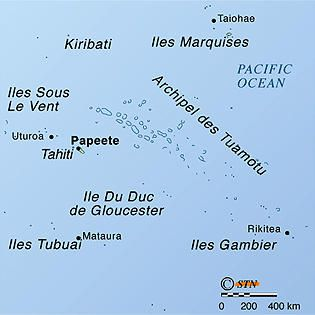
May 10, 2002
We were underway for three days on the 550 mile
passage from Nuku Hiva to Manihi in the Tuamotus. We encountered a tropical
wave about half way across that produced squalls and unpredictable winds. But,
we got a break as we closed in on Manihi. In the past, without the navigational
accuracy of GPS, most cruisers avoided the Tuamotus. They consist of hundreds
of miles of low lying coral atolls and reefs that are much more difficult to
see than the towering volcanic mountains of the Marquesas or Society Islands.
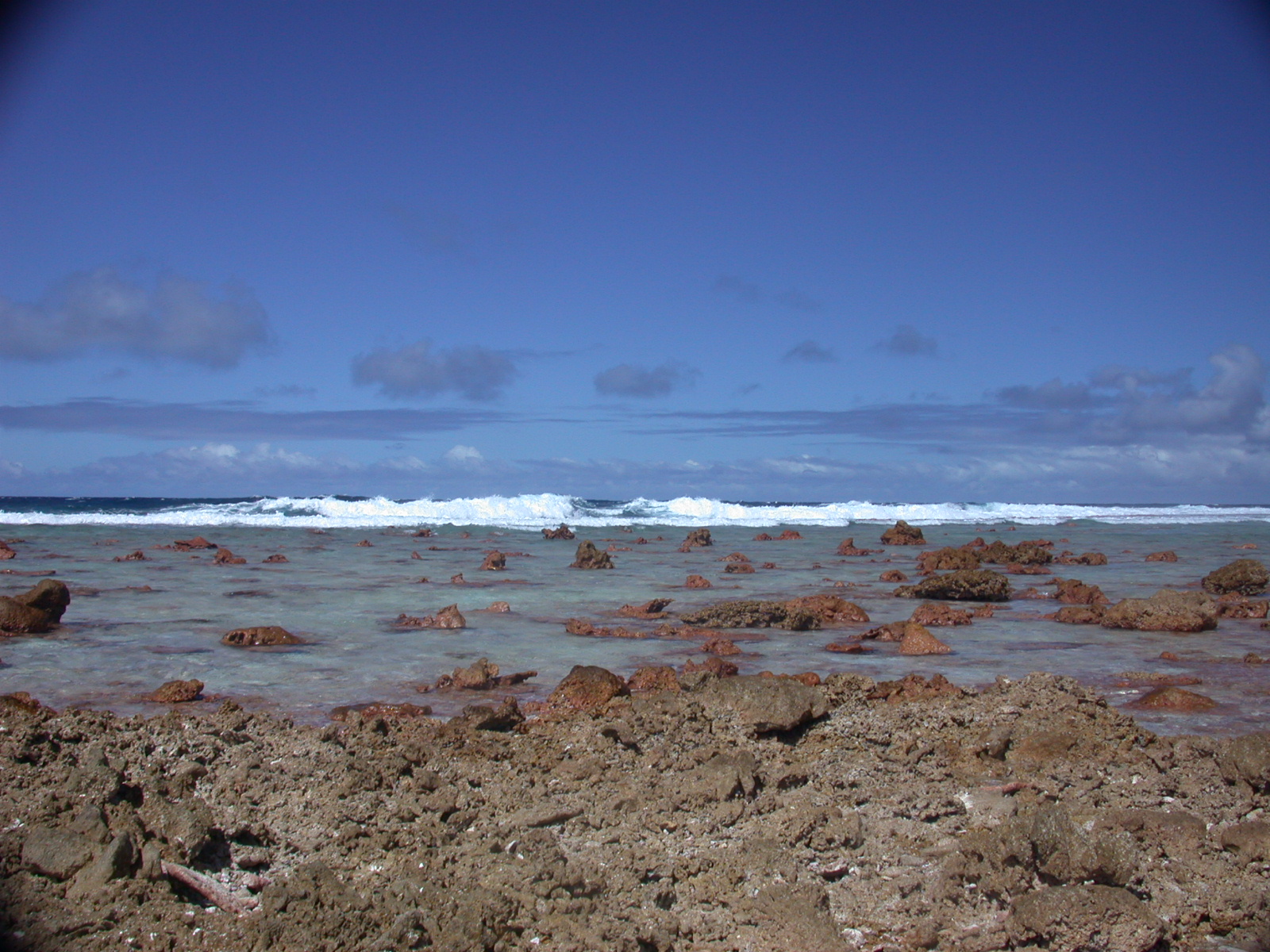
Low lying coral of the Tuamotus
May 12, 2002
We arrived at Manihi just about the right
time to enter the pass at slack water. Slack water is when the current is
moving the least. It doesn’t often coincide with high or low tide due to the
geophysical makeup of the lagoon and island. So, we used a few rules of thumb
and found it to be no problem. Entering a large lagoon can be treacherous. The
tides greatly affect the water movement and a few small passes often handle all
that movement in a very constricted area. Anyway, we entered without problem
and cruised over to the anchorage about 5 km (3 miles) away.
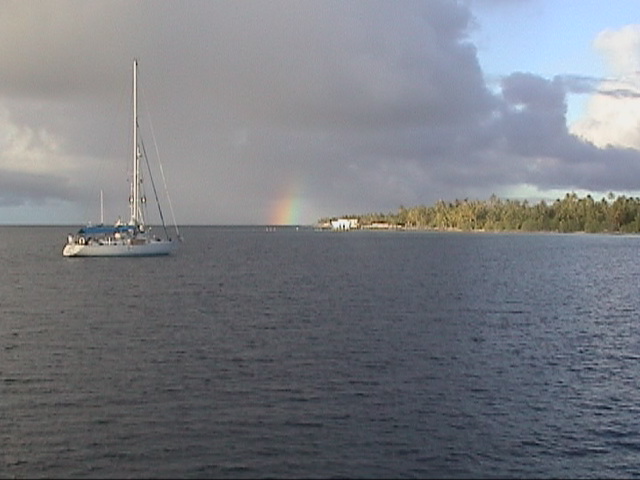
Manihi anchorage
May 15, 2002
The greatest source of income at Manihi
comes from the farming of black pearls. There are numerous pearl farms
scattered around the lagoon. In fact, it makes traversing the lagoon in a boat
a bit of a challenge. We did a little trading with some of the native people and
found they were quite willing to trade for pearls. Kevin got a beautiful grade
‘A’ black pearl in exchange for a Bob Dylan CD.
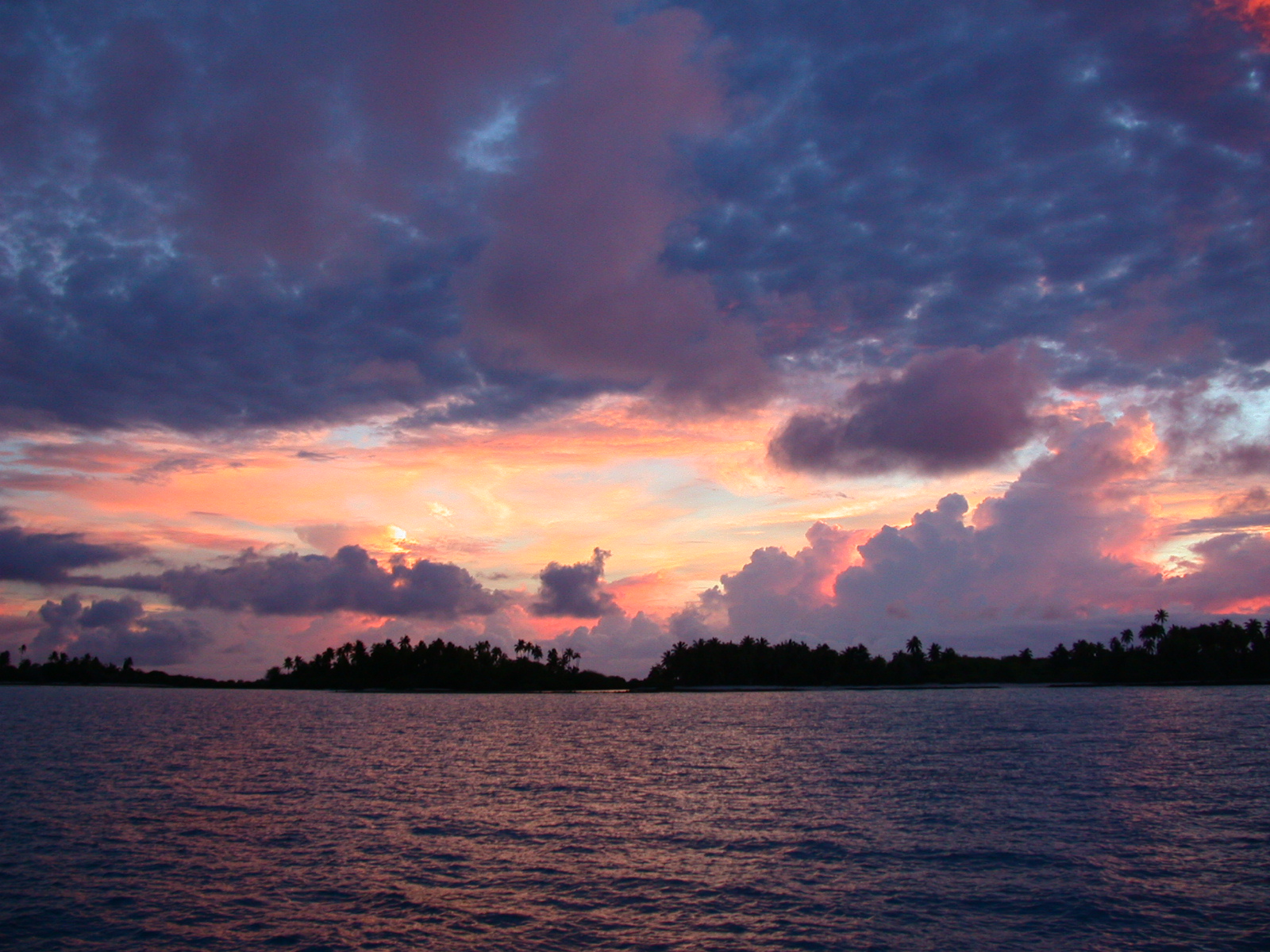
Sunset in the Tuamotus
May 20, 2002
We also had our first significant mechanical
problem while anchored here. We were planning to leave Manihi and move to a neighboring
island. But, when we went to start the engine so we could raise the anchor, it
turned over with one loud thud and stopped. So, after investigating and trying
several things, we finally removed one of the injectors and, much to our
horror, found the cylinder was completely full of salt water. Somehow, we had
ingested salt water into the engine where only diesel fuel and lubrication oil
belong. What a sinking feeling. Well, to make a long story short, we cleaned
out all the salt water, changed the oil three times and searched for the cause.
It turns out we had been running the generator for several days without ever
starting the main engine, not an unusual practice. But, unbeknown to us, there
was a blockage in the anti-siphon valve of the generator. When this happens,
its supposed to overflow into the bilge. But somebody had coupled the
anti-siphon drain from the generator into the engine’s anti-siphon drain, not a
good practice. Through another error, it caused the overflow from the blockage
to go directly into the engine’s exhaust line and eventually, over a week’s
time, caused the water to back up into the engine. We got it running again that
same day thanks to help from fellow cruisers (especially Harvey from s/v
Guitar, a British boat), who are always willing to lend each other a hand.
There was a big sigh of relief at this point!

Performing mechanical surgery
May 22, 2002
We departed Manihi for the overnight passage
to Rangiroa today. Rangiroa is the largest of the Tuamotu atolls. In fact it’s
the second largest atoll in the world following Kwajalein in the Marshall
Islands of Micronesia. It measures 46 miles by 15 miles and is a world renowned
diving spot. On the evening of this day, we ran into some squally weather. We
actually arrived at Tiputa Pass one of two navigable entrances to Rangiroa at
0430. So, we stayed several miles away to wait for sunlight to make our
approach. We were unfamiliar with the surrounding reef and this was the wise
and reasonable thing to do despite the 25 knot winds and rain.
.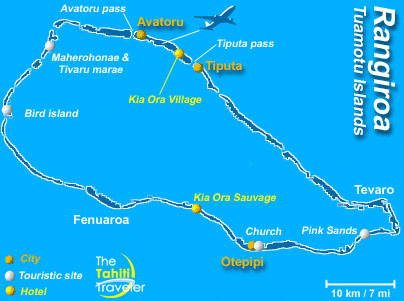
Map of Rangiroa
When daylight did break, we headed back for
Tiputa Pass only to find it was boiling with strong currents and breaking waves.
It looked very inhospitable. But, more bad weather was forecasted. Another boat
was just ahead of us and we talked on the radio. They were French and we had
seen them also arrive at early morning. They had been waiting for daylight like
us. They decided to give it a try. We watched them struggle in the pass, but,
they finally made it through. So, we went next. We kept a small amount of
mainsail up for stability and cranked the engine rpm’s way up. We started into
the pass with about 7.5 knots of boat speed. The following seas were getting
quite large and the current was fierce. Midway through the pass, I looked at
the speed on the GPS and it said we were moving forward at only 2 knots. The
adverse current was 5.5 knots! About that same time, I looked behind me and saw
three porpoise jump out of an oncoming wave doing their acrobatics. It scared
me to death as it took a second to figure out what they were. We eventually
broke through the current and went around to the anchorage. We dropped the
anchor with a big feeling of relief. Later that day, we walked over to Tiputa
Pass and shot some video of the current which had now subsided. In the photo
below, note the black tail in the center on the right edge. That’s one of the
resident dolphins! Those are people sitting on the bank across the way.
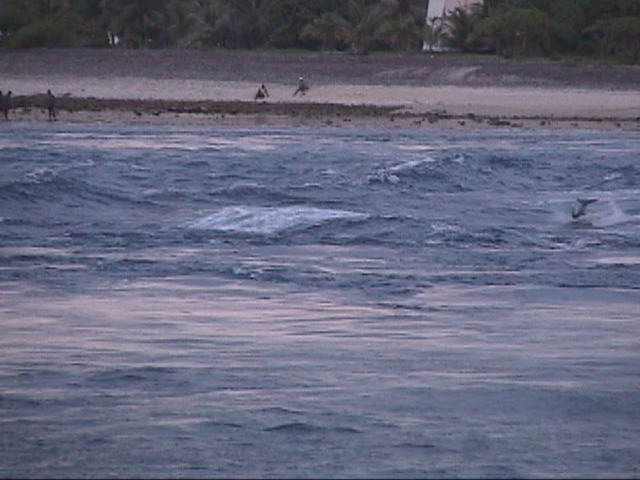
Tiputa Pass, Rangiroa
May 15, 2002
The weather eventually cleared and as high
pressure set in the lagoon really flatten out. The picture of Final Straw at
Tiputa Pass on our home page shows just how flat it got. We celebrated Suzy
& Kevin’s birthdays here and we did several excellent scuba dives and some
great snorkeling. Both Kevin and I did a silver tip shark dive, which is quite
spectacular. These are pretty aggressive animals and to see several of them up
close is exhilarating. But, it’s one of those things I only have to do once!
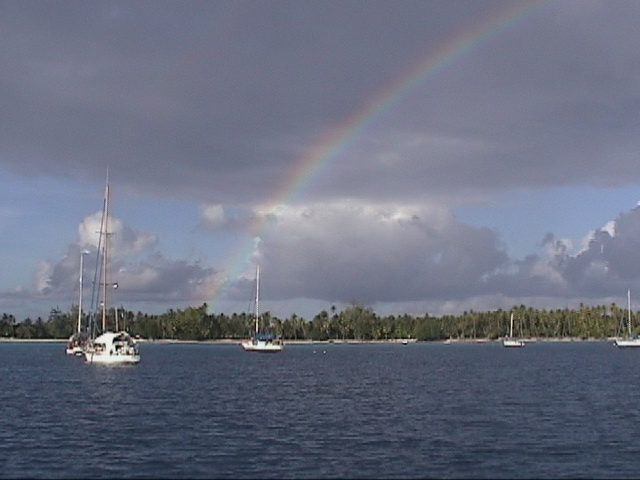
Anchorage at Tiputa Pass
May 29, 2002
Since were anchored just off the Kia Ora
Hotel, it was quite convenient and we were welcome to use their facilities. We
had dinner and watched a Polynesian show this evening for Kevin’s birthday. We
also did our diving from their scuba shop. And, we rented vehicles from them.
It made things a bit more comfortable and it was a very nice place.
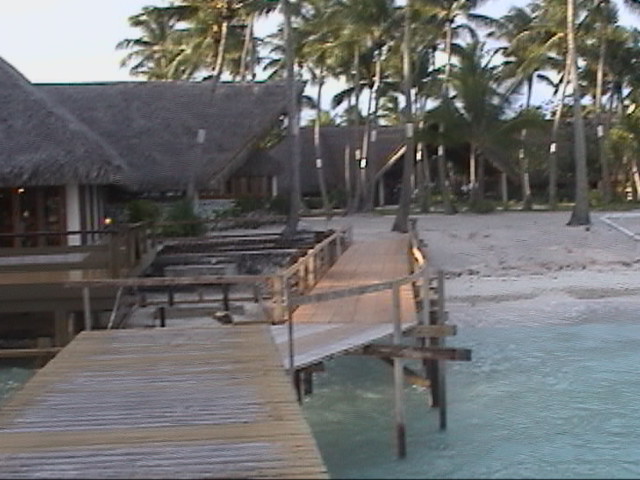
Walkway at Kia Ora Hotel
June 3, 2002
We had a nice 11 day stay at Rangiroa. But,
it was time to move on to Tahiti and Moorea. This is another overnight sail,
so, we left this morning at slack water in Tiputa Pass (I had made a point to
accurately determine when that occurs!) and arrived in sight of magnificent
Tahiti by the next morning. We tied up at the famous quay right in the middle
of downtown Papeete. What a stark difference this was from the little island
villages we’d become used to. Papeete is a bustling, busy city with a
population of over 100,000 people. That night we went to the town square where
there are a variety of street vendor type portable restaurants. It’s a
happening place and we had a lot of fun getting back to "normal" life
for a day.
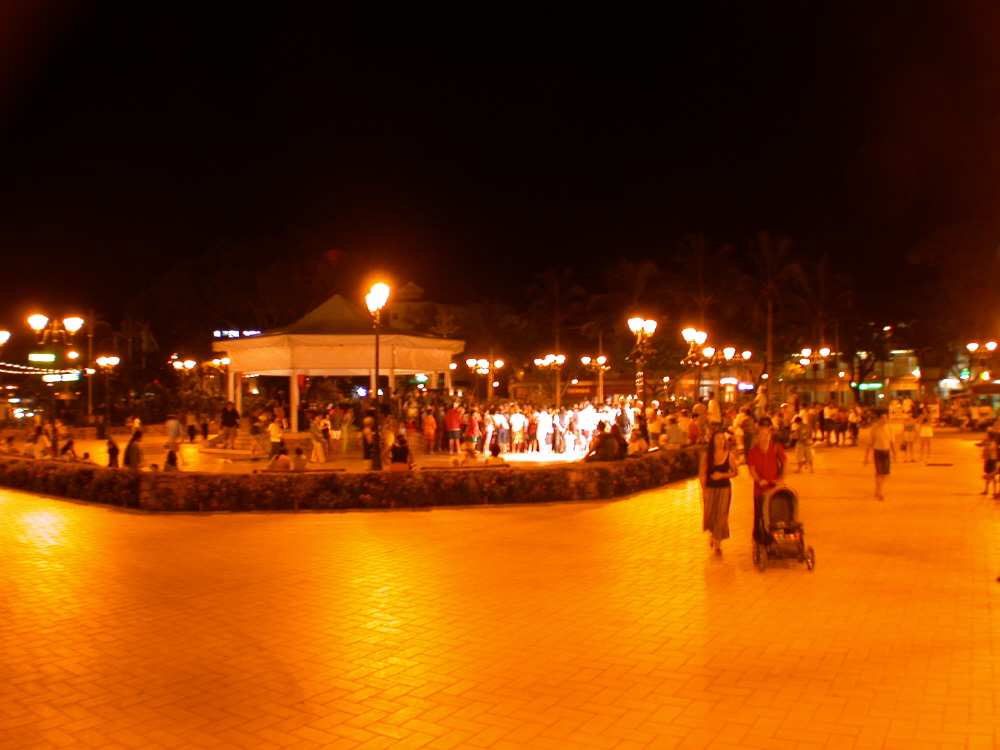
Town Square at Papeete, Tahiti
June 5, 2002
The quay was great for a night. But, we
found it just a bit too noisy and touristy. So, we headed around past the
airport at Faaa and anchored off Maeva Beach where most cruisers congregate.
Not far from the anchorage was a pass where Kevin enjoyed some of the good
Tahitian surf. Lisa, his girlfriend, joined us here and they had a nice time
touring the island and surfing.
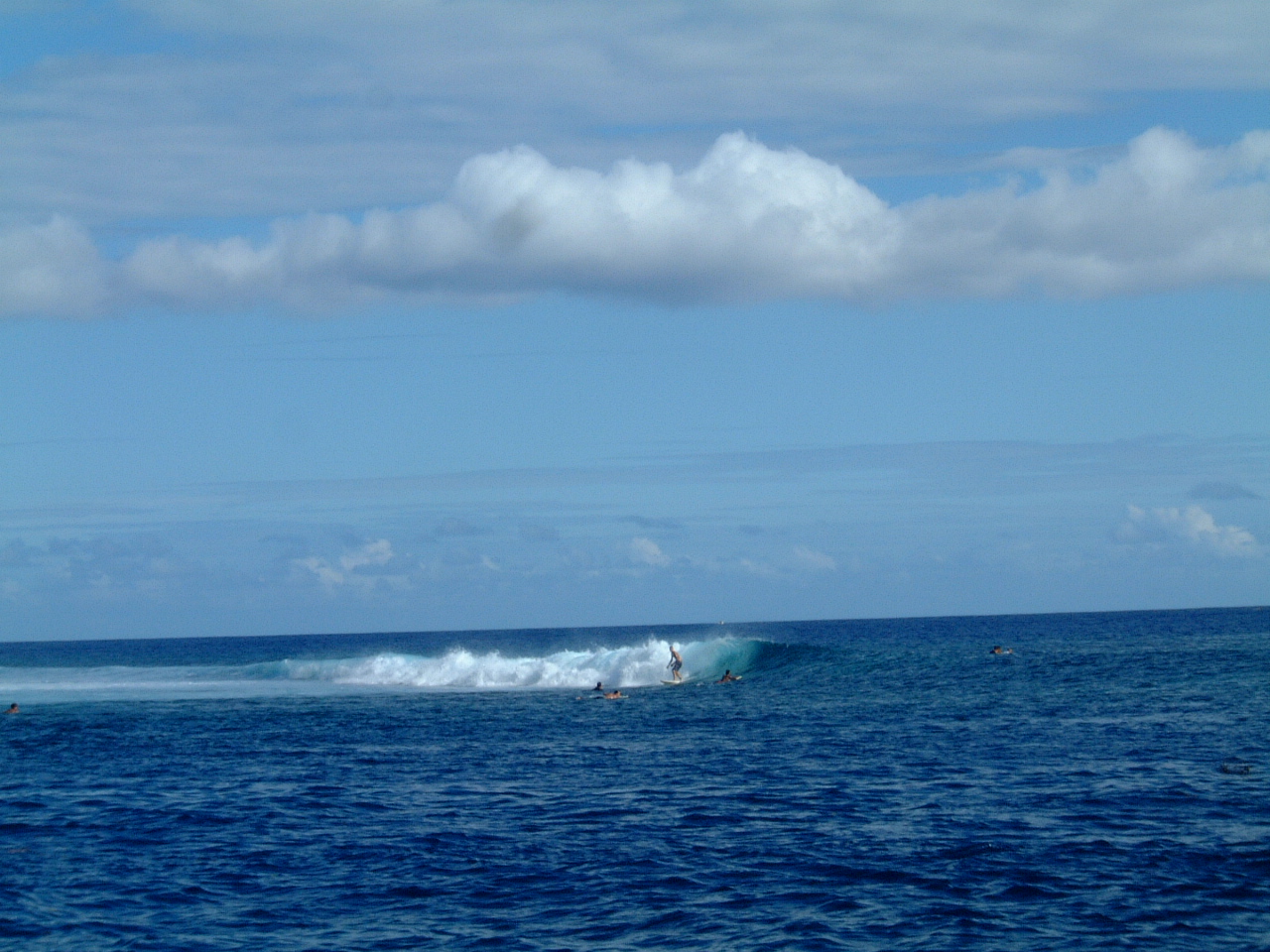
Kevin surfing in Tahiti
June 15, 2002
We stayed in Tahiti for 11 days. But, we’ve always
like Moorea, so we raised the anchor and crossed the channel to a beautiful
spot in Cook’s Bay.
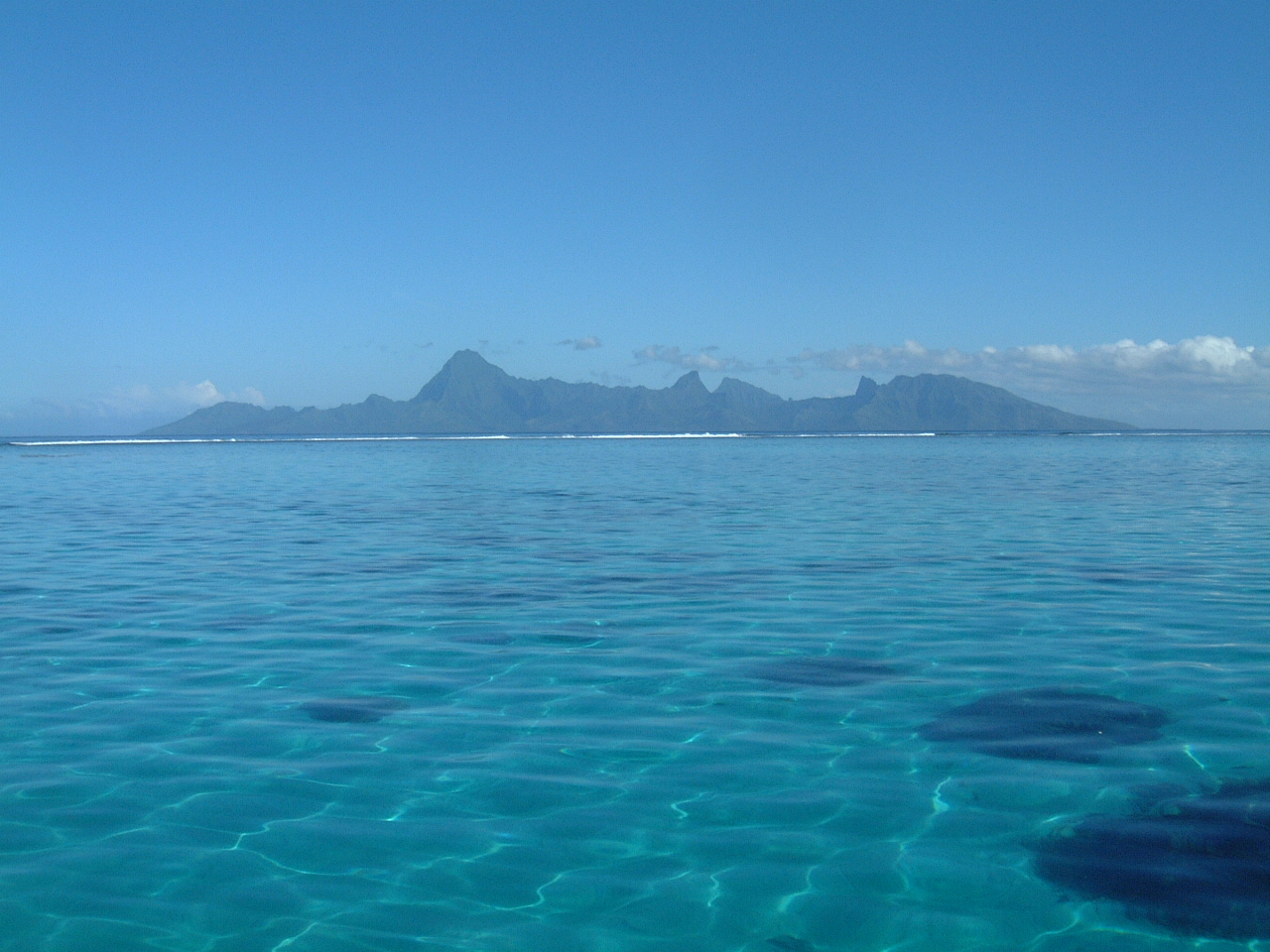
Moorea
To continue the adventure to Moorea and the
Society Islands, click here!
To go back to the home page, click here!